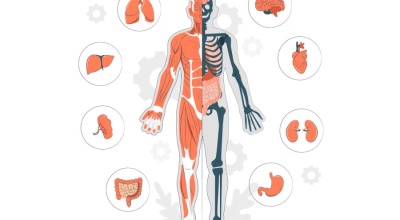The following resources provide a basic understanding of drinking water terms and where drinking water comes from. Search the tap water database and find out drinking water quality in your zip code. Think about why you want to use a water filter and what you want the filter to remove. Drinking water can contain industrial or agricultural contaminants linked to cancer, brain and nervous system damage, developmental defects, fertility problems or hormone disruption.
What is in Your Drinking Water?
Chemical risk assessment is a continuing process because rarely is there complete information about the toxicity of environmental contaminants.
Compared to adults, children drink more water per pound of body weight, resulting in greater exposure and greater risk. They are also more vulnerable to harmful contaminants because their bodies are still growing, and toxic chemicals cause more harm to developing organs and tissues.
Some drinking water contaminants are more harmful when exposure occurs during critical windows in a child’s development.
Since 2010, water utilities' testing has found pollutants in Americans' tap water, according to an Environmental Working Group (EWG) drinking water quality analysis of 30 million state water records.
Video: EWG Tap Water Database
The most complete source available on the quality of U.S. drinking water, aggregating and analyzing data from almost 50,000 public water utilities nationwide.
Types of Water Filters
Information and Resources
Assorted styles and types of water treatment devices are certified to remove a range of contaminants from water, in addition to reducing odor and improving taste. You should choose the type of filter that best fits your needs.
The recommended devices that are installed at your faucet tap (also known as point-of-use) or a pitcher-style filter.
Any type of water treatment device that you choose should meet National Sanitation Foundation (NSF) standards.
Certified Filters
Independent agencies certify filters to meet NSF standards and manufacturer claims.
For information about NSF-certified filters, contact:
- NSF International: www.nsf.org/Certified/DWTU or call 1-800-673-8010
- Water Quality Association: www.wqa.org or call 1-630-505-0160
Reducing Potential Lead Exposure
Pregnant women and children under age six should use filtered tap water for drinking and cooking until all sources of lead have been removed. This includes water used for making ice, beverages and infant formula. Filters certified for lead removal are required to meet NSF Standard 53.
Find the filter that works best for you:
- Water Filter Guide
- Technology Explainer
- Water Filter Maintenance
- Water Filter FAQ
Video: The Story of Bottled Water
“Think Outside the Bottle” Campaign has held countless taste tests comparing bottled water to tap water. The film explores the bottled water industry’s attacks on tap water and its use of seductive, environmental-themed advertising to cover up the mountains of plastic waste it produces. This film is a call to make a personal commitment to avoid bottled water.
The Different Kinds of Bottled Water and FDA Regulations for the Labeling
- Artesian Water: Water from a well tapping a confined aquifer in which the water level stands at some height above the top of the aquifer.
- Mineral Water: Water containing not less than 250 ppm total dissolved solids that originates from a geologically and physically protected underground water source. Mineral water is characterized by constant levels and relative proportions of minerals and trace elements at the source. No minerals may be added to mineral water.
- Purified Water: Water that is produced by distillation, deionization, reverse osmosis or other suitable processes and that meets the definition of "purified water" in the U.S. Pharmacopeia, 23d Revision, Jan. 1, 1995. As appropriate, also may be called "demineralized water," "deionized water," "distilled water," and "reverse osmosis water."
- Sparkling Bottled Water: Water that, after treatment and possible replacement of carbon dioxide, contains the same amount of carbon dioxide that it had at emergence from the source.
- Spring Water: Water derived from an underground formation from which water flows naturally to the surface of the earth at an identified location. Spring water may be collected at the spring or through a bore hole tapping the underground formation feeding the spring, but there are additional requirements for use of a bore hole.
Story of Bottled Water FAQs
Is bottled water cleaner?
The EPA regulates tap water under the Safe Drinking Water Act. Public water operators must provide reports to customers describing their water’s source, evidence of contaminants, and compliance with federal, state, and local regulations. The FDA regulates bottled water and cannot require certified lab testing or violation reporting; bottlers themselves are responsible for testing. Furthermore, the FDA does not require bottled water companies to disclose where the water came from, how it was treated, or what contaminants it contains.
Is bottled water tastier?
Corporate Accountability International’s “Think Outside the Bottle” Campaign has held countless taste tests comparing bottled water to tap water, as have many media outlets, from the New York Times to Cleveland’s local TV news channel. The results generally favor the tap. But ultimately, the point is not whether one tastes better than the other, it is how our taste—and our tastes—are shaped by advertising rather than by what’s good for us.
Is bottled tap different than plain tap?
Bottled water companies boast proprietary, state-of-the-art, multistage filtration processes and esoteric references to mineral additives that make their water more than just water, and certainly better than tap.
But, as Tony Clarke of Canada’s Polaris Institute points out in his book, Inside the Bottle, “unlike other resource production processes, where raw materials like timber, minerals, and oil are transformed into new products, bottled water is different. Bottled water is about ‘turning water into water.'”
And keep in mind that 10 percent to 15 percent of the cost of bottled water goes to the advertising budget. We not only buy their myths; we pay extra for them!
What’s the energy footprint of water bottles?
The Pacific Institute breaks it down like this: “Because bottled water required approximately 1 million tons of PET [Polyethylene Terephthalate] in 2006, those bottles required roughly 100 billion MJ of energy. A barrel of oil contains around 6,000 MJ, so producing those bottles required the equivalent of around 17 million barrels of oil. This is enough energy to fuel one million American cars for one year.” If that sounds crazy that’s because it is!
Really, water is a right?
General Comment 15 of the United Nations Committee on Economic, Social and Cultural Rights—the definitive interpretation of human rights laws regarding water—says “the human right to water entitles everyone to sufficient, safe, acceptable, physically accessible and affordable water for personal and domestic uses” … and …” is indispensable for leading a life in human dignity. It is a prerequisite for the realization of other human rights.”
In other words, it is the job of our governments (as the entities responsible for guaranteeing human rights) to ensure that we have good, clean, affordable tap water.
Need some first steps to take?
Many companies sell safe, easy-to-clean, lightweight drinking water bottles. Food & Water Watch and Corporate Accountability International—two of our partners on this film—offer sleek, stainless steel, reusable bottles to their members. Or pick up a mug or glass or sippy cup or … well, you get the point.
An under-the-sink filter can eliminate both bacterial and chemical concerns if you have either. And you can learn more about your water quality by contacting your local water utility. If find something that concerns you, don’t just turn to bottled water, ask questions, talk to your neighbors and organize to win improvements to your water supply.
What can I do?
Before the bottled water craze hit, we took it for granted that public fountains were part of any public building: schools, offices, sports stadiums and parks. Let’s bring them back! In the U.S., many state building codes mandate that there be one source of public water for every 1,000 people the building has capacity for. Why not subsidize public water fountains as part of local efforts to build green?
Bottled water bans are also spreading fast.In the U.S., San Francisco, Minneapolis, Seattle, and Salt Lake City have all banned bottled water at city functions to save money and promote their cities’ highly drinkable tap water. And in Canada, the Polaris Institute reports that as of December 2009, 72 municipalities from 8 provinces and 2 territories had implemented restrictions on bottled water. Way to go!
Public Downloads
All items are free to view, share, and download.
Public Downloads - Español (Spanish)
When available, we provide all our content with a Spanish version in our public download section. You can find additional material from sources listed in all our articles.
Download Drinking Water Activities and Standards














